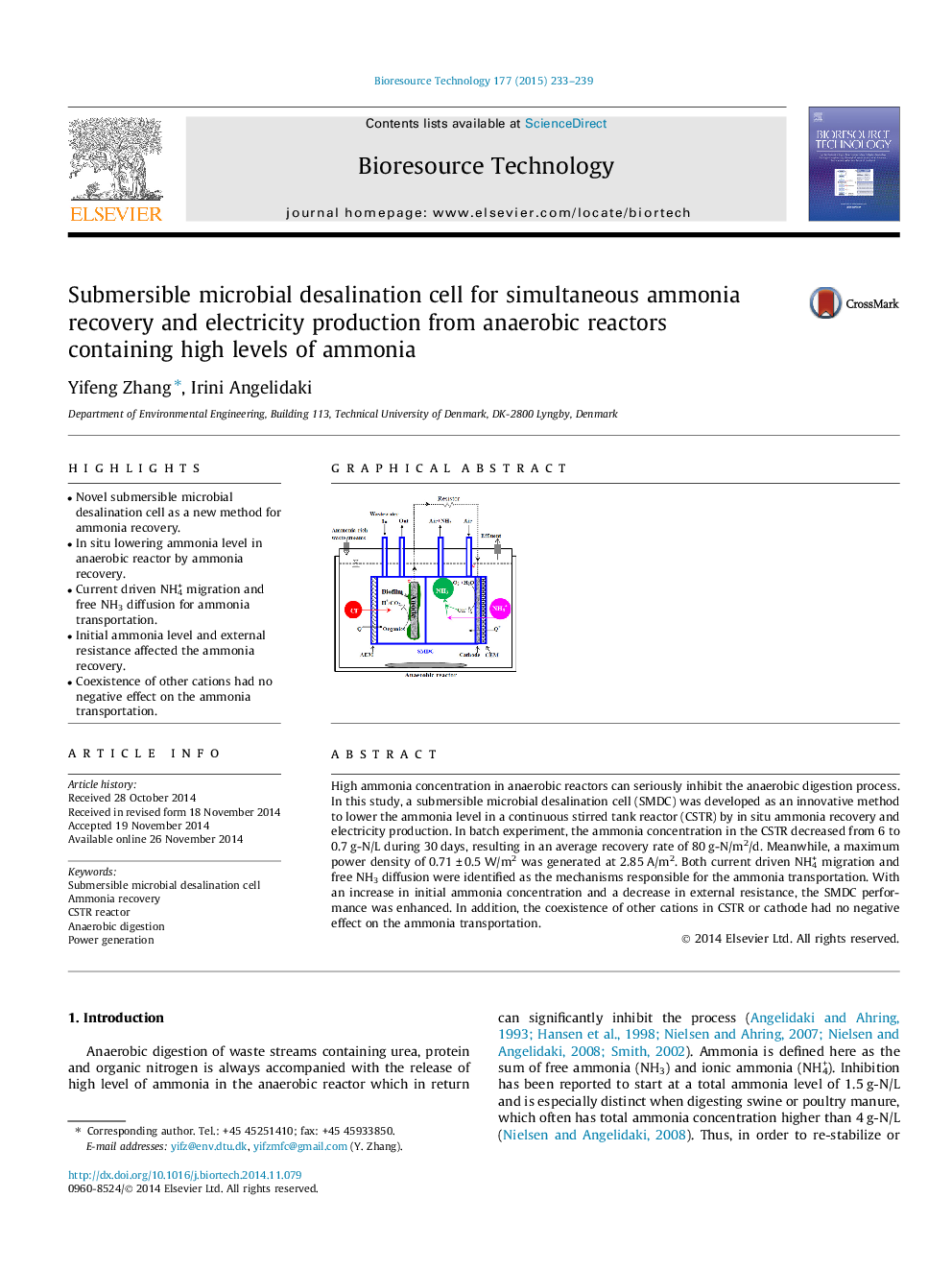| Article ID | Journal | Published Year | Pages | File Type |
|---|---|---|---|---|
| 680219 | Bioresource Technology | 2015 | 7 Pages |
•Novel submersible microbial desalination cell as a new method for ammonia recovery.•In situ lowering ammonia level in anaerobic reactor by ammonia recovery.•Current driven NH4+ migration and free NH3 diffusion for ammonia transportation.•Initial ammonia level and external resistance affected the ammonia recovery.•Coexistence of other cations had no negative effect on the ammonia transportation.
High ammonia concentration in anaerobic reactors can seriously inhibit the anaerobic digestion process. In this study, a submersible microbial desalination cell (SMDC) was developed as an innovative method to lower the ammonia level in a continuous stirred tank reactor (CSTR) by in situ ammonia recovery and electricity production. In batch experiment, the ammonia concentration in the CSTR decreased from 6 to 0.7 g-N/L during 30 days, resulting in an average recovery rate of 80 g-N/m2/d. Meanwhile, a maximum power density of 0.71 ± 0.5 W/m2 was generated at 2.85 A/m2. Both current driven NH4+ migration and free NH3 diffusion were identified as the mechanisms responsible for the ammonia transportation. With an increase in initial ammonia concentration and a decrease in external resistance, the SMDC performance was enhanced. In addition, the coexistence of other cations in CSTR or cathode had no negative effect on the ammonia transportation.
Graphical abstractFigure optionsDownload full-size imageDownload as PowerPoint slide
